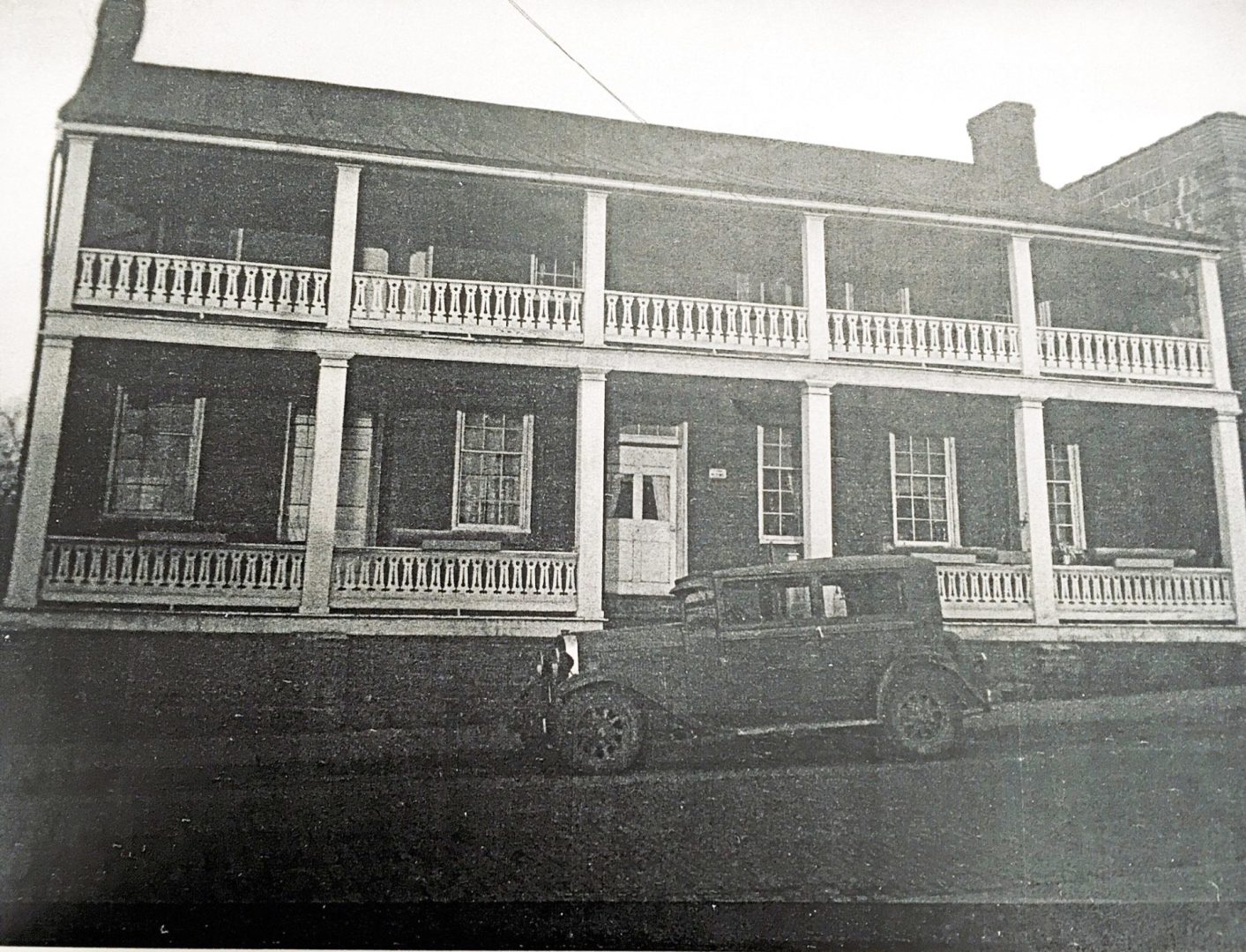
By Michelle Myers
If you’re walking east on Washington Street in Lewisburg, take a good look at the building located between Jefferson and Lafayette that is currently occupied by the Greenbrier Real Estate Service. This white painted, black shuttered structure is all that remains of the famous Bell Tavern, also known at various times as the Frazier Tavern, the Old Bell Stand and the Bivens Boarding House.
The site of the Bell Tavern first appears in town records in 1784 when Joseph McClung purchased the lot for six pounds. More than two decades later Benjamin Carmin had purchased and then sold the property to Hugh and James McLaughlin for 750 pounds. By 1823, James Frazier had purchased “a certain house and lot that Hugh and James McLaughlin now occupy as a tavern” for the princely sum of $5,000.
It was here in 1826 that the famous public dinner for Whig party leader and US Secretary of State Henry Clay took place to much fanfare, Clay was staying at the Old White when he received the invitation and seems to have been a bit lukewarm about the prospect for he wrote to a colleague that “they have invited me to a public dinner at Lewisburg, and not being able to assign any sufficient reason for declining it, I have accepted it.” In spite of his apparent reluctance, Clay girded his loins, made the journey from White Sulphur Springs to Lewisburg, and more than 200 guests enjoyed both a rousing speech that lasted almost an hour as well as a good dinner.
What did the Bell Tavern look like? It was a brick two story structure with wide porches that ran the length of the first and second floors of the building. Six square wooden columns supported the porches which boasted white painted wooden railings. The first floor boasted two doors and five windows; the upper had just one door and five front windows.
Just west of the structure was the two story brick house which was a part of the Bell Tavern lot. This building originally had what has been described as a delicate wrought iron railing that enclosed a second floor balcony and is the part that escaped demolition to still stand today.
In an 1859 issue of the Greenbrier Independent newspaper, the Bell Tavern was remembered by an unnamed writer as a big house back in 1826 in which, besides Henry Clay, other luminaries such as Virginia Senator William C. Rives were entertained to dinner and where President Andrew Jackson had breakfast on his way to Washington. The writer went on to reminisce that “here generally the village politicians congregated to discuss the affairs of the nation. The newly adjoining two-story brick cabins with an archway going upstairs were set apart for the accommodation of judges and lawyers attending court.”
And it was indeed a large enterprise. The capacity of the Bell Tavern to accommodate substantial numbers of guests in the early part of the 19th century was reflected in an 1834 deed which also conveyed the property’s furniture – thirty three beds, eight dining tables and twelve small tables and one side board, one safe and seven dozen chairs.
Even though it was still described as the Bell Tavern in an 1878 sale, the tavern business did not last much longer. When it ceased operations as a tavern, the building became the Bivens Boarding House. Before its eventual demise, it had apparently most recently been operated as a rooming house by a Mrs. L.R. Wallace.
The once handsome structure met its end after it fell into serious disrepair. In 1959 it was sold to James Messer who had it demolished to make way for a new Western Auto Store. A contemporary photograph just prior to its demolition shows a dilapidated and forlorn looking building fenced off from the street and now missing its pillars and porches.
Postscript. No doubt hailed by many at the time as forward thinking modernity in the “out with the old, in with the new” 1950s, the destruction of such a significant part of Lewisburg history may seem shocking to us now. In the end though, the Lewisburg Western Auto Associate Store had a much shorter lifetime than the storied Bell Tavern. So sometimes goes progress.


